
Anodized aluminum components
The inevitable question at any CNC machined parts post-production stage remains which is better, powder coating or anodizing? Anodized and powder coat finishes are two popular, widely embraced options for aluminum products and many other metallic materials.
Both processes offer reliable protection and decorative coating/film for machined parts. However, choosing between powder coating vs. anodizing is often tricky. So, you must understand the differences between both processes to make the right choice.
This article discusses anodizing vs. powder coating, its pros and cons, its typical applications, and things to consider when determining the ideal finish for your products.
Anodizing vs. Powder Coating Processes
Anodizing and powder coating are surface finishing processes that help to enhance the aesthetic and functionality of CNC machined parts. Let’s consider the two methods:
Anodizing
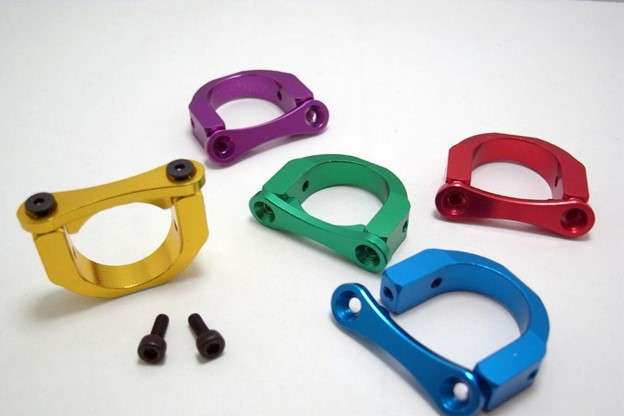
Anodized D-ring kit in different colors
Anodizing is an environmentally friendly and widely used surface finishing option for aluminum components. Most people often refer to it as a plating operation because it is an electrochemical conversion technique involving the creation of a thin layer of oxide on the surface of a machined part. You can perform the anodizing operation on aluminum, titanium, magnesium, and other metals.
Anodizing offers precision surface grinding that makes CNC-machined parts more sturdy and gives them a superior-quality finish. Anodized parts resist corrosion better and can be used longer without compromising their cosmetic appearance in any working situation.
Learn more about Anodizing:
Advantages of Anodizing
- Increases the lifespan of machined parts by enhancing their resistance to abrasion and corrosion.
- Improves the non-conductivity of machined parts.
- The oxide film is usually stronger than powder coat and potent against weather conditions.
- Anodized parts are often easy to maintain and clean.
- It is not easily damaged or affected by UV light.
- Anodizing is ideal for products constantly used by the public, such as doors, because of its high resistance to contact and abuse.
Disadvantages of Anodizing
- Anodized machined parts are not usually chemical resistant
- Color variation due to coating translucence
- Limited color options compared to powder coat
Powder Coating
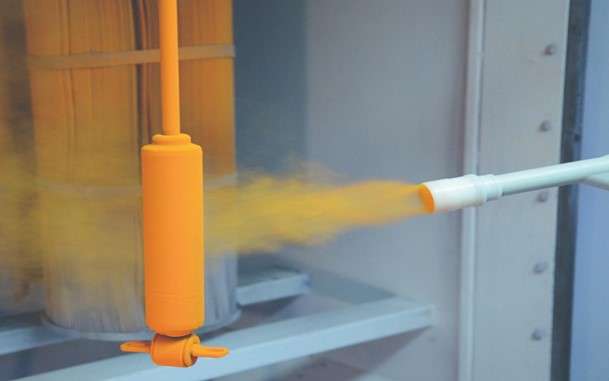
Powder coating a metal component
Powder coating is another standard option involving an electrostatic application of powdered paint made of finely-ground polymer and pigment on fabricated steel. This process applies this mixture on CNC machined parts using a corona gun and an oven that bakes the paint. The curing process forms an aesthetically strong and durable film on a machined part, which is more durable than typical painting techniques and has good corrosion and wear resistance.
Powder coat offers an extensive range of color options for the best part aesthetic. Powder coating is a standard surface treatment with fast-growing popularity and a wide range of applications in different industries due to its efficiency.
Further reading:
Advantages of Powder Coating
Here are some of the known advantages of powder coating:
- The process is straightforward and offers a wide range of color options.
- It helps to enhance the corrosion resistance of aluminum machined parts.
- It increases the hardness and reflectivity of materials.
- Ensures durability by protecting machined parts from wear and tear
- Conceals dye blemishes or streaks caused by mill finish maintaining a fine and smooth surface.
- Powder coating gives raw materials from mills an enhanced appearance and better color uniformity.
- It is an easy match with existing colors or older painted products
Disadvantages of Powder Coating
- It is tough to powder-coat large surfaces
- Requires curing to prevent color complications.
- It has high initial costs.
- It requires effective pre-treatment to prevent color inconsistency and flaws.
- Mixing powders to achieve custom colors is difficult.
Differences Between Anodized Aluminum and Powder Coated Aluminum
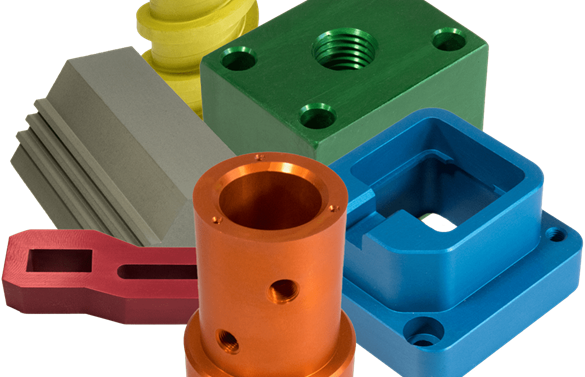
Anodized and powder-coated aluminum parts
This section explores the differences between these techniques. Here are a few parameters in which the differences are categorized:
Appearance/Color Options
Anodizing offers clear and satin finish options, while powder coat offers simple gloss, satin, and matt finish to supper gloss, matt, and textured coatings. You can have a color variation on your workpiece because anodizing allows the processing of different batches.
Although powder coating has massive color options, the powder coating powder remains constant. Therefore, it hinders any color variation on a particular machined part. You can use powder coating for a better color mixture or grading on any machined component.
Corrosion Resistance
The coating of anodized parts adheres firmly and is highly resistant to corrosion. Parts with anodized finishes handle brutality better than powder coating. As a result, different industries utilize anodizing in custom parts manufacturing for heavy-duty use. These parts often show higher performance and endurance.
Although powder-coated parts have good corrosion resistance, they wear more quickly than anodized parts. Powder-coated surfaces are commonly susceptible to abrasion and wear. As a result, the slightest impact can cause damage to the surface. Nevertheless, the layer from powder coating is more potent than typical paints.
Durability
Anodizing improves the endurance levels of the machined parts. The thickness of a machined part’s coating often determines its longevity. The oxide coating in anodizing bonds firmly with the material’s surface; thus, it doesn’t chip, crack or peel off easily. Anodizing enhances the resistivity level of parts to wear and tear, which is common when parts are used for extended periods.
On the other hand, power coating is a more precise process that forms a protective and aesthetic film on any material. However, it is vulnerable to UV lights and rain – sunlight causes oxidation in powder-coated surfaces, while rain causes paint lifting.
You might want to know the Role of Surface Finishing in a Product’s Life, and how surface finishing improves the product’s life.
Cost
Cost is a significant determinant when choosing between anodized and powder-coated aluminum parts. Anodizing has an initial cost advantage over powder coating. This is because it doesn’t need any preparatory procedure before giving a product finishing treatment which is mandatory in powder coating.
However, powder coating offers better durability to cover the high initial costs even though it creates a thicker layer with specific chips and scratches than anodized aluminum parts. Powder coating provides dependable protection at cost-efficient costs compared to anodizing.
Try Prolean Now!
Common Application for Anodized vs. Powder-Coated Parts

Anodized intricate components
Here are the typical applications for anodizing–
- Furniture – beds, tables, file, and storage chests
- Structures and architecture – building exteriors, curtain walls, roofing systems
- Sporting equipment and boats – golf carts, camping, and fishing equipment
- Automotive – trim parts, nameplates, control panels, wheel covers
- Appliances – televisions, refrigerators, microwave equipment, coffee brewers, dryers
- Food industry – grills, pans, coolers
On the other hand, the typical applications for powder coating include the following:
- Appliances – washer tops, freezer cabinets, water heaters
- Furniture – doorknobs, patio furniture, office metal cabinets, chairs, and desk
- Automotive – shock absorbers, braking pars, radiator coil springs, door handles, bumpers, window handles
- Architecture and Construction – stadium seats, building windows and doors, fencing and poles, posts, light poles
Anodized vs. Powder Coated Aluminum: Which Is Better for CNC Machined Parts?
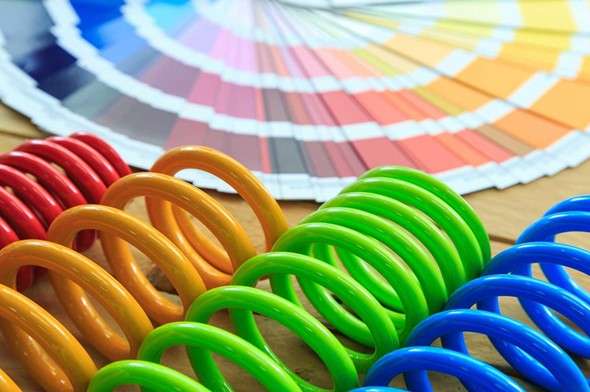
Rolled powder-coated parts
The surface of your CNC machined part will determine the ideal surface finish option that is better for it. It is important to note that both anodizing and powder coating processes are perfect for protecting and enhancing the appearance of CNC machined parts. However, you should know that anodizing offers better results if your parts require tighter dimensional margins.
You should go for anodizing if your parts need good resistance to wear and corrosion. More importantly, anodizing provides a perfect appearance and is a better alternative when powder coating fails to offer the desired results. Nonetheless, if vibrant colors or unique textured finishes is what your project requires, you may want to consider powder coating as the perfect surface finishes for your machined parts.
Meanwhile, powder-coated parts are well-suited for interior use and last longer when exposed to internal elements. Likewise, it would help not to expose powder-coated surfaces to outside factors such as moisture or sunlight because it affects their durability. If you want the cheaper option, powder coating is your go-to option. It guarantees reliable protection with good care.
Tips For Choosing Between Anodizing and Powder Coating for CNC Machined Parts
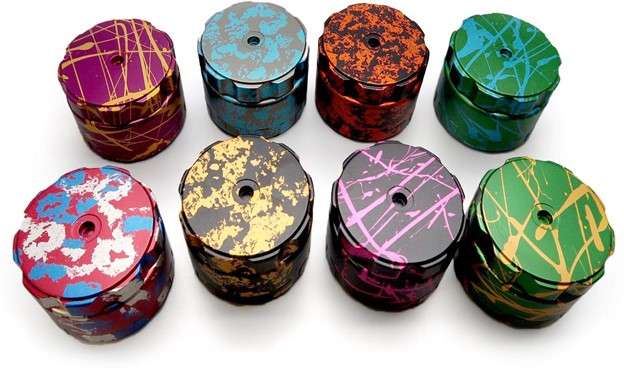
anodized container components
Although both anodized aluminum vs. powder coated aluminum is well-suited for different uses. Here are factors to consider to help choose the right process:
Application of CNC Machined Parts
Anodizing is your go-to option when dealing with advanced engineering applications and other outdoor uses that require increased exposure. It offers the excellent surface hardness and wear resistance needed. Powder coating is ideal for applications that require high-impact strength and for parts that don’t take to anodizing, such as steel or stainless steel.
Durability
It would be best to choose a surface finish that fits the application and material of the parts. Anodizing is the best option for enhanced durability in cases where your parts have to survive being exposed to atmospheric conditions such as moisture, sunlight, and heat. In contrast, powder coating is perfect for internal atmospheric conditions because it cracks and peels off when exposed to sunlight and moisture.
Machined Parts’ Dimensions
The dimensions of your parts are an essential factor to remember when choosing a surface finish because they can change the dimensions—both anodizing and powder coating finish offers varying paint sturdiness and protection. Anodized parts have thin, but dense surface finishes making them the most preferred option for various applications. The thickness of powder coating can alter the dimensions of parts.
Cost
You must consider your budget for the machining project, as the best surface finish requires careful planning and complicated procedures. As discussed earlier in this article, anodizing is more expensive than powder coating.
Conclusion
Anodizing and powder coating processes efficiently protect CNC machined parts from corrosion and wear and tear while enhancing their aesthetics. However, choosing the ideal one for your parts depends on your parts’ needs. This anodized vs. powder coat comparison will help you to carefully evaluate your part’s requirements to achieve the best results.
Contact us at Protoleantech for reliable and long-lasting surface finish services. Our group of experts with many years of experience in different surface finish options is available to assist. Outsource your project to professionals for the best results!
FAQs
Can Anodized Aluminum be Powder Coat?
Anodized parts are not suitable for powder coating operations. The anodized layer will hinder the chromate pre-treatment before the powder coating process.
Can Anodized Aluminum Parts Rust?
Generally, aluminum parts don’t rust but tend to corrode if exposed to air, moisture, salt, or other corrosion-causing elements. However, anodized aluminum parts corrode less due to their thicker oxide layer.
Can Aluminum be Powder Coated?
Aluminum is one of the versatile materials compatible with powder coating. It helps to increase its longevity and resistance to corrosion.


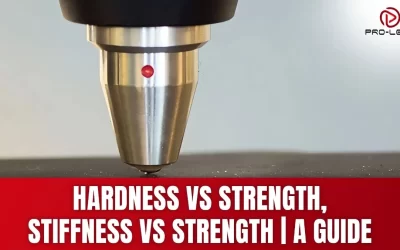

Your comparison on anodizing vs powder coating is greatly appreciated! It’s valuable to highlight that powder coating provides more visually appealing and cost-effective finishes, whereas anodizing offers greater durability for high-wear components.